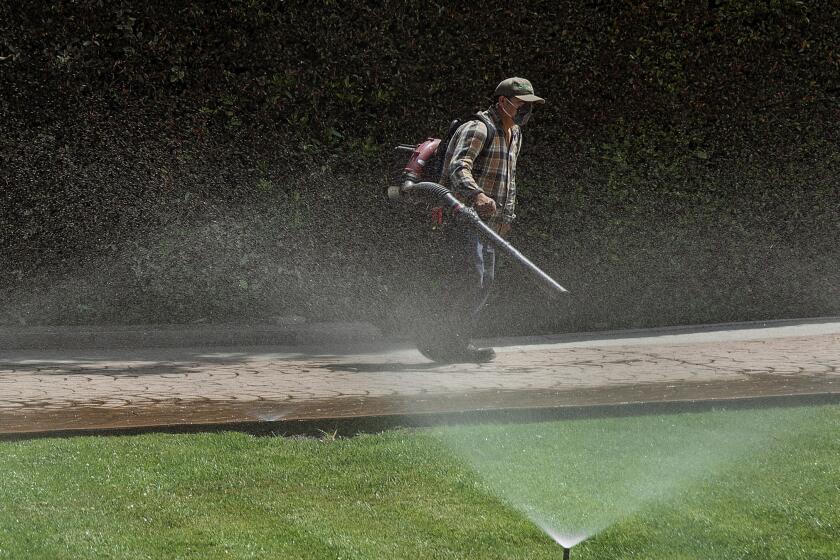Planting primer
- Share via
Sam Maghazei, a novice gardener who lives in West Los Angeles, discovered a low-price vendor online and ordered 40 trees for $300. He was startled when they arrived with trunks only one-eighth to one-fourth-inch in diameter. Now they’re dying. Maghazei blames himself. “I didn’t do my research,” he says. Here are some tips that would have helped Maghazei buy and grow his trees:
Size: Know what size caliper (diameter) tree is available. One- and 2-year-old trees can range from three-eighths to 1 1/4 inch. A five-eighths-inch caliper is average and reliable for a novice gardener.
Chill: Deciduous fruit trees need a specific number of chill hours (temperatures between 32 and 45 degrees) to produce fruit. Regional nurseries understand which trees are best for area gardens.
Space: Is there room for a full-size, semi-dwarf or dwarf tree?
Containerized trees: Those in containers for more than a year may be root-bound -- roots that are matted and filling the pot. Roots can be untangled and trees planted. However, choose another tree if possible.
When to plant: It’s best not to plant the day after rain. Just walking on soil will cause it to compact and lose vital oxygen.
Don’t amend: Use no amendments when planting unless soil is sandy or dense clay.
Mulch: Cover soil with as much as 4 inches of mulch. Keep mulch about 3 inches from the trunk.
Water: Many trees die from overwatering. Make sure soil dries out between waterings and isn’t soggy.
Harvest: To extend the fruit season in small gardens, think about planting two or three trees in one hole. Instead of 500 plums over two weeks, expect 100 on each tree staggered over a two-month period. Learn to prune trees during early growth. Consult experts in local nurseries and look online.
-- Ellen Hoffs



